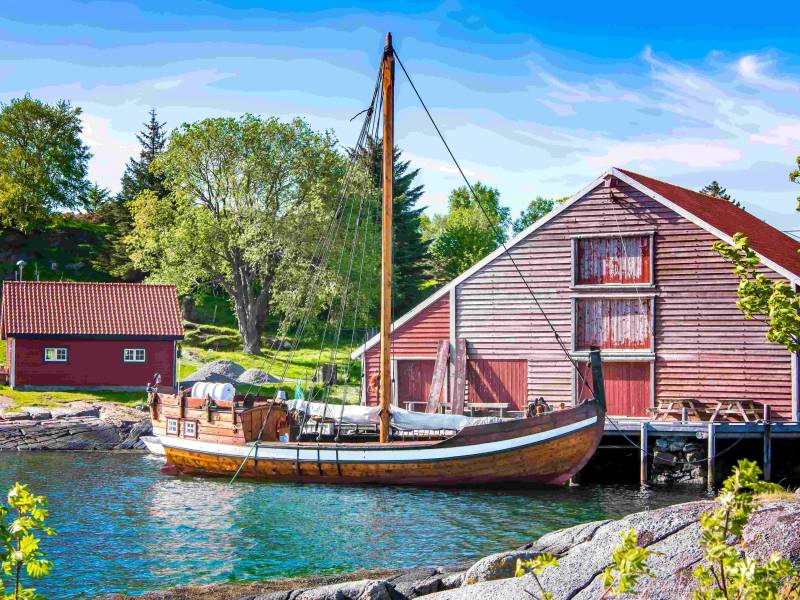HERØYBRUA BRIDGE
It’s like an elegant, giant tiara in concrete, soaring high and free through the air.
The longest stretch is 170 metres, and with 32 metres of sail height, even large ships can pass underneath. It is this concrete structure that is referred to as Herøybrua, but in folklore the name also refers to the almost 2.5-kilometre long stretch of bridges, rock fills and the road that cuts through islets and reefs.
This could be because the this area in itself constitutes a bridge to the inner and outer parts of the municipality, a bridge that meant that the vast majority of the inhabitants had ferry-free movements in between the neighbouring communities. But this particular bridge belongs to a new era.
Now we can only reminisce about endless ferry queues, and the old ferry so packed that the cars hung over the edge. And while we're at it, lets not forget the little kiosk with Alf the friendly ticket man who sold us paper tickets, or the local party in 1976, when King Olav opened the bridge, and the helicopter he arrived in made the red carpet float into the sky.
But Herøybrua is not there for reminiscing. It marked a crucial step into the future for people in Havlandet.
Audio guides available in:Norsk bokmål, English (British)










